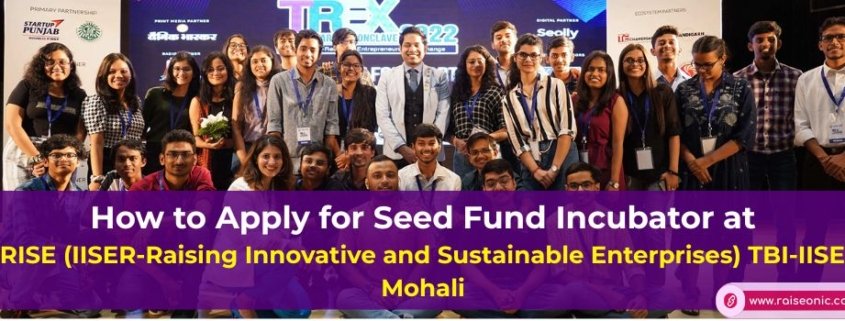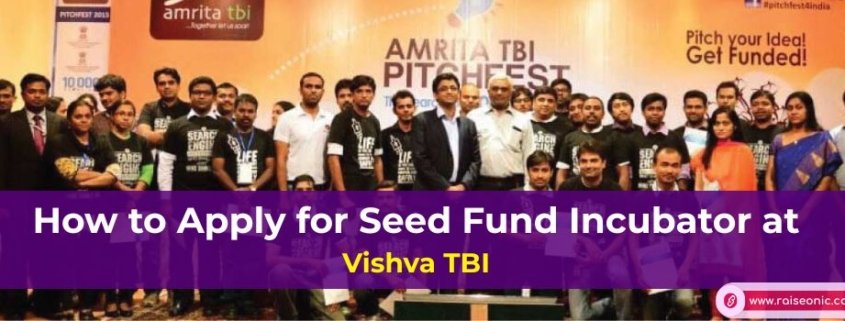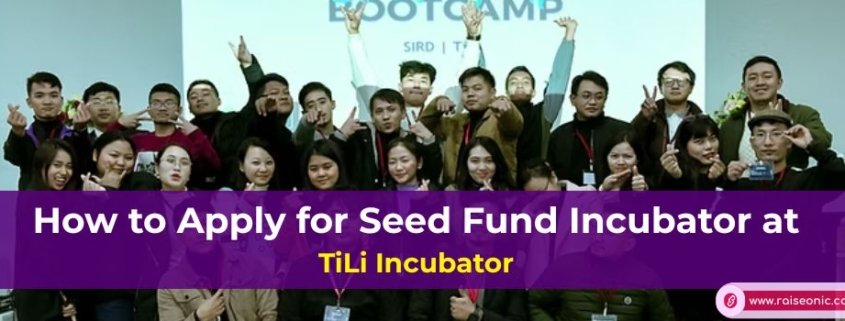Introduction
India’s innovation and startup ecosystem is growing at an unprecedented pace. From bustling metros to smaller towns, a new generation of innovators is shaping solutions that are both locally relevant and globally scalable. At the heart of this movement are Atal Community Innovation Centres (ACICs) — an initiative by the Atal Innovation Mission (AIM), NITI Aayog, to nurture inclusive innovation across India.
One such dynamic hub is the ACIC RISE Association, located in Indore, Madhya Pradesh. Functioning under the Shri Govindram Seksaria Institute of Technology and Science (SGSITS), Indore — one of Central India’s most reputed engineering institutions — this incubator empowers entrepreneurs, researchers, and students to convert impactful ideas into successful enterprises.
Whether you are developing a rural innovation, a tech-based solution, or a social enterprise, ACIC RISE Association provides the ecosystem, mentorship, and funding needed to help your idea grow — from concept to company.
This comprehensive guide will help you understand what ACIC RISE stands for, its programs, eligibility, benefits, and a step-by-step process on how to apply for incubation or seed funding support.
About ACIC RISE Association
The ACIC RISE Association (Rural Innovation and Startup Ecosystem) is an officially recognized Atal Community Innovation Centre supported by the Atal Innovation Mission (AIM), NITI Aayog, Government of India.
Operating under SGSITS Indore, ACIC RISE plays a pivotal role in nurturing community-based and inclusive innovation. It focuses on enabling entrepreneurs from Tier-II and Tier-III cities, rural areas, and academic institutions — groups often underrepresented in mainstream startup ecosystems.
Its core mission is to bridge the gap between innovation and inclusion by creating a platform where creativity, technology, and community come together to drive sustainable growth.
Vision
“To build an inclusive and sustainable innovation ecosystem that promotes technology-driven entrepreneurship, supports youth-led ventures, and contributes to India’s socio-economic development.”
Mission
-
To identify, mentor, and scale startups addressing local and national challenges.
-
To empower students, innovators, and entrepreneurs with access to technology, mentorship, and funding.
-
To drive community-based innovation and strengthen rural entrepreneurship networks.
Key Focus Areas
ACIC RISE Association supports innovation across multiple domains that directly impact communities and industries alike. Its core focus sectors include:
-
🌾 AgriTech and Food Processing
-
🌞 Renewable Energy and Sustainability
-
🧬 HealthTech and BioTech
-
💧 Water Management and Sanitation
-
🎓 Education and Skill Development (EdTech)
-
⚙️ IoT, Robotics, and Automation
-
🌍 Rural and Social Innovation
-
👩💼 Women Entrepreneurship and Empowerment
These diverse focus areas ensure that the incubator remains at the intersection of technology, social impact, and sustainability — making it a true engine of inclusive innovation.
Why Choose ACIC RISE Association
Unlike traditional incubators that primarily serve urban entrepreneurs, ACIC RISE is built around the principle of community-driven innovation. It doesn’t just support startups — it creates ecosystems of collaboration, inclusion, and long-term impact.
Here’s what makes ACIC RISE a preferred choice for emerging innovators:
1️⃣ Institutional Strength and Academic Ecosystem
Being part of SGSITS Indore gives ACIC RISE access to advanced research labs, testing facilities, and a talent pool of professors, engineers, and students. This academic synergy helps startups validate technologies, develop prototypes, and collaborate on R&D.
2️⃣ Government Recognition and Policy Linkages
As a recognized ACIC under Atal Innovation Mission (AIM), the incubator connects startups with national-level funding schemes, policy support, and visibility through government innovation platforms.
3️⃣ Modern Infrastructure and Resources
Startups benefit from a vibrant innovation environment that includes:
-
Dedicated co-working spaces and startup offices
-
Product development and prototyping labs
-
IoT and robotics labs
-
3D printing and fabrication units
-
High-speed internet, meeting rooms, and seminar halls
4️⃣ Expert Mentorship and Advisory
Each incubatee startup is guided by a curated panel of mentors — ranging from industry leaders and investors to policy experts and academicians. This multi-dimensional support ensures startups grow with technical validation, business acumen, and investor readiness.
5️⃣ Funding and Investor Access
ACIC RISE provides a launchpad to funding opportunities including:
-
AIM Grants (Atal Innovation Mission)
-
Startup India Seed Fund Scheme (SISFS)
-
MP Startup Policy & MSME Department Grants
-
Corporate CSR-based funding initiatives
-
Angel and venture capital networks
6️⃣ Collaboration and Community Building
Regularly hosting hackathons, bootcamps, demo days, and startup showcases, ACIC RISE creates spaces for startups to learn, network, and collaborate. These events bring together students, founders, corporates, and investors to accelerate innovation.
Who Can Apply for Incubation at ACIC RISE Association
ACIC RISE invites a diverse group of applicants from across India, including:
✅ Students, faculty, and alumni from technical or non-technical backgrounds
✅ Individual innovators with an idea, prototype, or proof of concept
✅ Registered startups or MSMEs developing technology-driven solutions
✅ Women entrepreneurs and social innovators
✅ Researchers and scientists aiming to commercialize lab-based inventions
Eligibility Criteria
-
The applicant must be an Indian citizen or a DPIIT-recognized startup.
-
The startup or idea should demonstrate innovation, sustainability, and impact.
-
Preference is given to ideas addressing rural, social, or local challenges.
-
Startups can be at idea, prototype, or early commercialization stages.
Programs at ACIC RISE Association
To cater to startups at different stages, ACIC RISE offers a range of structured programs:
1️⃣ Pre-Incubation Program
For innovators in the ideation or proof-of-concept phase.
Includes:
-
Ideation workshops and design-thinking sessions
-
Prototype development support
-
Business model and validation mentoring
2️⃣ Incubation Program
For startups ready to build and commercialize.
Includes:
-
Access to workspace and labs
-
Technical and business mentorship
-
IP, legal, and compliance assistance
-
Investor and funding access
3️⃣ Acceleration Program
For growth-stage startups seeking market expansion and investment.
Includes:
-
Investor readiness programs
-
Go-to-market and scaling support
-
Industry partnerships and visibility
4️⃣ Entrepreneurship Development Initiatives
Beyond incubation, ACIC RISE conducts entrepreneurship bootcamps, hackathons, EDPs, and innovation challenges to inspire entrepreneurial thinking among students and communities.
Step-by-Step Guide: How to Apply
Step 1️⃣: Visit the Official Website
Go to the ACIC RISE Association webpage or the SGSITS incubation portal and navigate to the “Apply for Incubation” section.
Step 2️⃣: Prepare Your Pitch Deck
Your pitch deck should clearly include:
-
Problem and proposed solution
-
Market scope and target segment
-
Innovation and technology overview
-
Business model and scalability plan
-
Team composition and funding needs
Step 3️⃣: Fill the Application Form
Upload your startup’s information along with necessary documents:
-
Pitch deck and prototype visuals
-
Registration certificate (if applicable)
-
Patent/IP details or demo videos
Step 4️⃣: Evaluation and Screening
Applications are reviewed by an expert panel based on:
-
Novelty and social impact
-
Technical and commercial feasibility
-
Market potential and execution plan
Step 5️⃣: Pitch Presentation
Shortlisted teams present their ideas before a selection committee of mentors, investors, and faculty experts.
Step 6️⃣: Selection and Onboarding
Selected startups are onboarded as official incubatees and provided access to all incubation benefits.
Step 7️⃣: Mentoring and Growth Support
Once onboarded, startups receive continuous support through:
-
One-on-one mentorship
-
Product testing and validation
-
Investor networking opportunities
-
Media visibility and demo-day showcases
Benefits of Joining ACIC RISE Association
✨ Access to modern labs, co-working spaces, and infrastructure
✨ Expert mentorship and business guidance
✨ Seed funding and grant support
✨ Exposure to investor and corporate networks
✨ IP, legal, and compliance support
✨ National visibility through innovation programs
✨ Research collaboration with SGSITS faculty
Success Stories
Some of the remarkable startups that have thrived under ACIC RISE include:
🌾 AgriNova Solutions – AI-powered tools for soil health and smart farming.
💧 HydroPure Tech – Solar-driven water purification for rural India.
⚙️ EcoSmart Devices – IoT-based smart home and energy-efficient systems.
These startups demonstrate how inclusive innovation can solve local problems while contributing to India’s growth story.
Impact and Future Vision
ACIC RISE aims to empower 500+ innovators and startups over the next five years by:
-
Launching sector-specific innovation clusters
-
Introducing micro-grant and pre-seed funding programs
-
Partnering with global innovation networks
-
Expanding rural entrepreneurship outreach
By nurturing ideas rooted in community needs, ACIC RISE envisions building a self-sustaining innovation hub for Central India.
Conclusion
The ACIC RISE Association is more than an incubator — it’s a movement for inclusive innovation.
By democratizing access to mentorship, funding, and technology, it empowers innovators from all walks of life to create solutions that drive both economic and social change.
If you have an idea that can make a difference, now is the time.
💡 Visit the official website, prepare your proposal, and apply for incubation at ACIC RISE Association today — your journey toward innovation and impact begins here.











